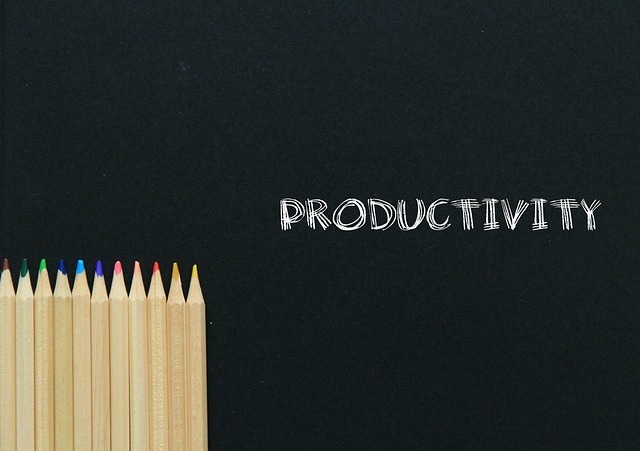Understanding Personalized Productivity
In a fast-paced world brimming with distractions, establishing a personalized productivity system can be a game-changer. Personalization means acknowledging that no two individuals are exactly alike. Each person possesses their own unique blend of preferences, habits, and challenges. Therefore, it makes sense that a one-size-fits-all approach to productivity often falls short. A personalized productivity system considers who you are as a person, your working styles, and your life circumstances, ensuring that the tools and techniques you choose resonate with your habits and lifestyle.
To begin with, understanding your current productivity levels is essential. This involves assessing how you spend your time, what tasks you find most engaging, and which often lead to procrastination. You can keep a time log to track your activities over a week. Doing so reveals patterns in your behavior. For instance, perhaps you notice you’re most productive in the mornings but struggle in the afternoons. That insight alone can guide you in scheduling your high-focus tasks when you’re at your peak energy.
When thinking about your productivity, consider the elements that motivate you. Some people thrive on deadlines, while others prefer a more open-ended approach. Thus, it’s crucial to incorporate aspects into your personalized productivity system that engage your motivation. This self-reflective process sets the foundation for a system tailored specifically for you. Remember, what inspires one person may not inspire another; so, centering your productivity strategy around your intrinsic motivators becomes imperative.
Components of Your Personalized Productivity System
Creating a personalized productivity system involves curating various components—tools and techniques that complement your unique working style. First, start with goal-setting. Defining clear, achievable goals paves the way for maintaining focus. Consider using the SMART criteria: Specific, Measurable, Achievable, Relevant, and Time-bound. Setting goals in this way transforms vague intentions into concrete plans, giving you clarity on what you want to achieve.
Moreover, prioritizing your tasks is another critical component. The Eisenhower Matrix is a valuable tool in this context. This tool helps you divide tasks into four categories based on urgency and importance. By categorizing tasks, you gain a clearer perspective on where to focus your energies. Are you spending too much time on non-essential tasks? This assessment helps you shift your focus toward what genuinely matters and aligns with your overarching goals.
Next, incorporate productivity tools that resonate with your preferences. For some, digital tools like Trello or Asana work wonders for task management. Others may prefer old-school methods, such as physical planners or bullet journals. Selecting the right tools ensures that you remain engaged in the process. Also, find a scheduling method that suits your lifestyle. The Pomodoro Technique, which breaks work into intervals, or the time-blocking method, which allocates specific time slots for tasks, can help focus your energies more effectively.
The Role of Environment in Productivity
Your environment significantly influences your productivity levels. It’s not just about the physical space you occupy; it’s also about the stimuli around you. To maximize your productivity, create a workspace that minimizes distractions. Decluttering your space can often lead to mental clarity. A clean and organized desk allows your mind to focus better on the tasks ahead. Think about the lighting, ergonomics, and even the colors of your workspace. All these elements contribute to your overall productivity.
Additionally, consider how background noise affects your focus. Some people can concentrate with music or white noise, while others prefer complete silence. Experiment with different environments to discern what works best for you. If you find comfort in nature, working outside could increase your productivity. However, if you thrive in a bustling cafe, the ambient sounds there may inspire your creativity.
Taking care of your well-being also plays a crucial role. Often, we overlook how vital physical and mental health influences productivity. Regular breaks, exercise, and a balanced diet can recharge your energy. Remember that frequent short breaks can increase overall productivity, as they prevent burnout. Incorporate mindfulness practices or short walks into your routine to maintain a fresh perspective. Addressing your well-being can elevate your productivity levels significantly.
Building Habits for Sustainable Productivity
Creating a personalized productivity system is only half the equation; building sustainable habits solidifies your commitment to self-improvement. Start with small changes. It’s often easier to build consistency with manageable adjustments rather than attempting a complete overhaul of your routine. For instance, if you want to create a habit of reading more, begin with just 10 minutes daily rather than aiming for an entire book each week. Gradually, you’ll find that small shifts lead to significant changes over time.
Consider using habit-tracking tools or apps to encourage consistency. Visual progress can greatly motivate you to stick to your goals. Each time you complete a task or adhere to your new habit, mark it on your calendar or use a digital tracker. The satisfaction of seeing those marks accumulate serves as a positive reinforcement, compelling you to continue.
Furthermore, accountability can act as a powerful motivator. Share your goals with a trusted friend or join a group focused on self-improvement. Having others aware of your objectives can encourage you to stay committed. Sometimes, just knowing someone else is rooting for you makes a world of difference in maintaining your productivity journey.
Adapting Your System Over Time
Your personalized productivity system will evolve over time, and that’s perfectly okay. Life throws various challenges and transitions at us, from personal changes to professional developments. Your needs and circumstances will change. Regularly revisiting and adjusting your productivity system helps you stay aligned with your goals. For instance, at the start of a new semester or a business quarter, consider reassessing your goals and methods. Are you still on track? Are your tools still serving you?
Feedback plays a crucial role in this adaptation process. Reflect on what works and what doesn’t. Perhaps you’ve adopted a new task management application that seemed promising but turned out to be a distraction. Acknowledge it, adjust your approach, and move forward. Being flexible and adaptable prevents the feeling of stagnation and helps you maintain momentum. Always seek out new methods or tools that may suit your evolving lifestyle.
Lastly, remember to celebrate progress, no matter how small. Keep a reflective journal where you document your achievements and milestones. Acknowledging your progress fosters a sense of accomplishment, reinforcing the importance of your personalized productivity system. Whether you finish a substantial project or simply stick to your new reading habit for a week, celebrating these moments keeps your motivation alive.
FAQ
1. How can I identify my motivational style for productivity?
To identify your motivational style, reflect on the tasks you enjoy the most and those you tend to procrastinate. Consider keeping a journal or using a motivational assessment tool to analyze your preferences. Observing when you feel most driven can also provide insights into your productivity style.
2. What tools are recommended for managing tasks effectively?
Popular task management tools include Trello, Asana, Todoist, and Notion. Each of these platforms offers unique features, so it’s worthwhile to explore several to discover which aligns with your style. For those who prefer pen and paper, bullet journals and planners are excellent for tracking tasks.
3. How often should I reassess my productivity system?
It’s beneficial to reassess your productivity system every few months or at specific intervals, like the beginning of a new project or season. Regular reflections ensure your system remains effective as circumstances in your personal and professional life evolve.
4. What strategies can I use to overcome procrastination?
To overcome procrastination, break tasks into smaller, manageable steps. Use techniques such as the Pomodoro Technique to maintain focus. Additionally, identifying and acknowledging the reasons behind procrastination can help address those barriers directly.
5. Can meditation and mindfulness improve productivity?
Yes, meditation and mindfulness can significantly improve productivity. These practices enhance focus, reduce stress, and promote mental clarity—allowing you to work more efficiently and make better decisions throughout your day.



